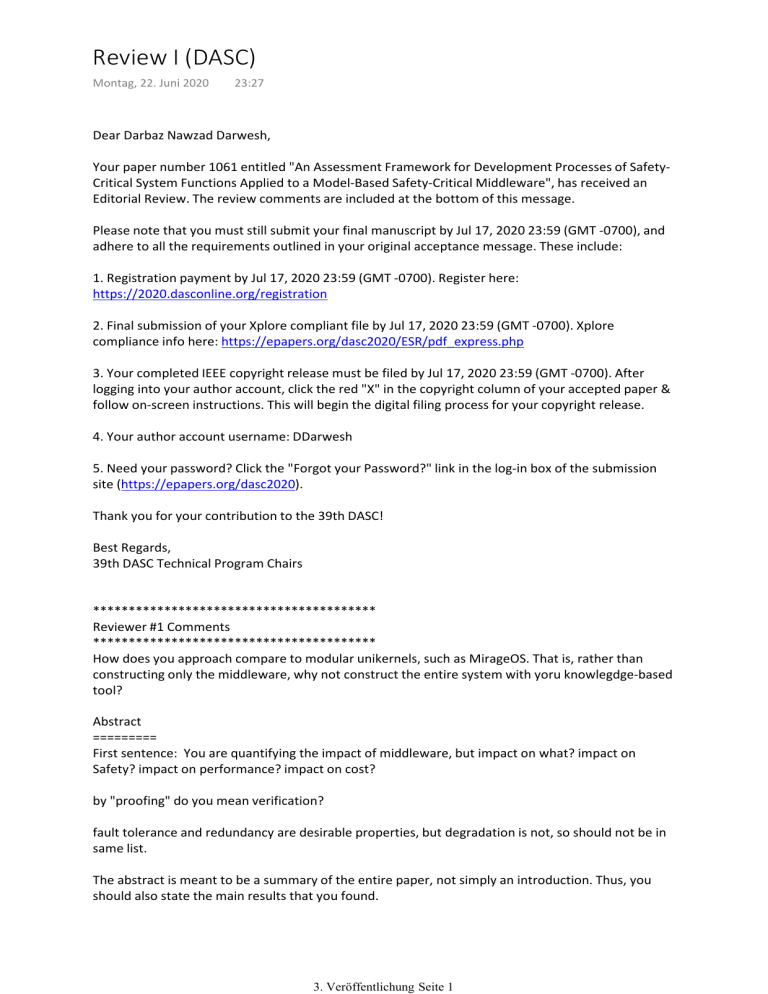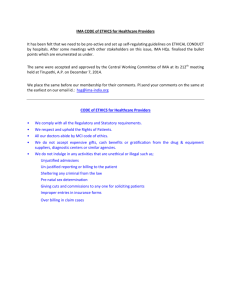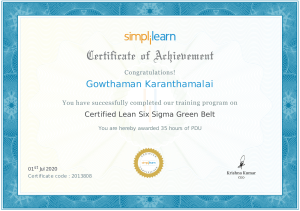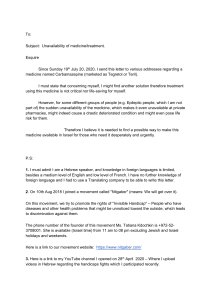
Review I (DASC) Montag, 22. Juni 2020 23:27 Dear Darbaz Nawzad Darwesh, Your paper number 1061 entitled "An Assessment Framework for Development Processes of SafetyCritical System Functions Applied to a Model-Based Safety-Critical Middleware", has received an Editorial Review. The review comments are included at the bottom of this message. Please note that you must still submit your final manuscript by Jul 17, 2020 23:59 (GMT -0700), and adhere to all the requirements outlined in your original acceptance message. These include: 1. Registration payment by Jul 17, 2020 23:59 (GMT -0700). Register here: https://2020.dasconline.org/registration 2. Final submission of your Xplore compliant file by Jul 17, 2020 23:59 (GMT -0700). Xplore compliance info here: https://epapers.org/dasc2020/ESR/pdf_express.php 3. Your completed IEEE copyright release must be filed by Jul 17, 2020 23:59 (GMT -0700). After logging into your author account, click the red "X" in the copyright column of your accepted paper & follow on-screen instructions. This will begin the digital filing process for your copyright release. 4. Your author account username: DDarwesh 5. Need your password? Click the "Forgot your Password?" link in the log-in box of the submission site (https://epapers.org/dasc2020). Thank you for your contribution to the 39th DASC! Best Regards, 39th DASC Technical Program Chairs **************************************** Reviewer #1 Comments **************************************** How does you approach compare to modular unikernels, such as MirageOS. That is, rather than constructing only the middleware, why not construct the entire system with yoru knowlegdge-based tool? Abstract ========= First sentence: You are quantifying the impact of middleware, but impact on what? impact on Safety? impact on performance? impact on cost? by "proofing" do you mean verification? fault tolerance and redundancy are desirable properties, but degradation is not, so should not be in same list. The abstract is meant to be a summary of the entire paper, not simply an introduction. Thus, you should also state the main results that you found. I. Intro: 3. Veröffentlichung Seite 1 I. Intro: ============ First sentence, impact on what? Cost? "even the guidelines" does not make grammatical sense. "Model-based generated airborne software is already used for avionic functions, for instance SCADE" -- SCADE is an example of the tool, not an example of the airborne software. "benefits in e.g. in Spiral Model" should be "benefits in iterative approaches e.g. a Spiral Model" "However, making a qualitative statement about how" -- do you mean "quantitative"? "two category groups" should be "two categories" "secondly they primarily intended for new software development" should be "secondly they are primarily intended for new software development" "which both major inputs to existing assessment methods." should be "which are both major inputs to existing assessment methods." I suggest that you do not provide so much detail on the four evaluation views here in the introduction, since you provide even more details later in the paper. It is not clear what a "high-lift system" is. Please provide a short explanation at this point. II. methods under eval ============ A. FAP ====== "The platform management is not completely detached from the operating system and must have full control over all hardware resources as well as the operating system," -- I found this confusing. The OS manages the HW, so how can the platform management have full control of hardware resources (except via the OS)? It is not unusual to manually review the outputs of a tool rather than qualify the tool itself. The paper may spend too much time on the AAA process for something that is not really novel. Figure 1 has many terms and labels that are not explained in the text of the document. I am not sure of the value of this figure. B. CM ========= "Due to the increasing the aircraft system functions in terms of quantity and complexity over the last few decades, it was inevitable to solve this situation compared to federated development strategy." should be "Due to the increasing complexity of aircraft system functions over the last few decades, it was inevitable that IMA would be developed to solve this situation compared to federated development strategy." "Therefore, according to the DO-297 a comprehensive guideline is defined for IMA platform technology" should be "This led to the 3. Veröffentlichung Seite 2 a comprehensive guideline is defined for IMA platform technology" should be "This led to the publication of DO-297, a comprehensive guideline defining IMA platform technology" "Since the IMA provide a well-defined API, the applications software can be developed in an independent process." -- it is not the API that allows independence. It is the guaranteed isolation that allows independent verification of each application. "The conventional process is assumed as a manual development approach e.g. manual writing of requirements, test cases and configurations with word processors e.g. Microsoft Office." -- Although I have witnessed requirements written in MS Word, the much more common approach is to use a requirements management system such as DOORS. C. Selective Middleware approach ======================================= "enables using the FAP into the standardized IMA modules" -- I do not know what this means. Please re-word to make your meaning clear. IV. Assessment ============= A. Project View ================ "The FAA proposes a set of criteria as quality metrics for avionics applications software [24]. Out of these relevant criteria are selected for the purpose of this research" -- why didn't you use all the criteria from the FAA? What drove your selections? "(5) With the second point" -- what was the first point? B. Analysis method ====================== It is not clear who makes the assessment of efficiency. Did you use multiple experienced avionics developers to obtain a more credible estimation? equastion (ii) says that "i" is the numbe of criteria, yet in the equation is appares to simply be the index. V. Evaluation Results ========================= In Figure 6, you should not use a pie chart to illustrate percentages that do not add up to 100%. A bar chart would be more appropriate for your data. 3. Veröffentlichung Seite 3






